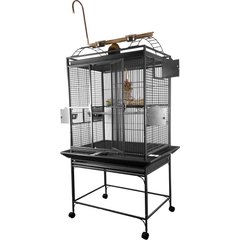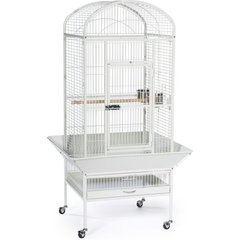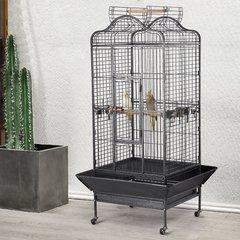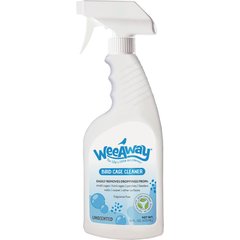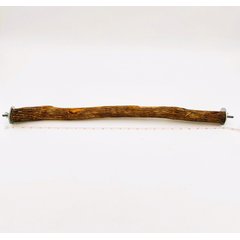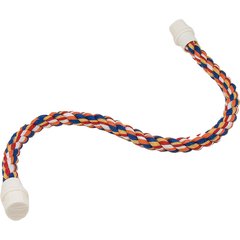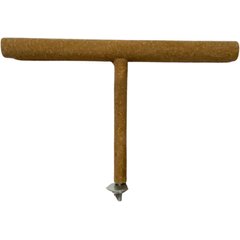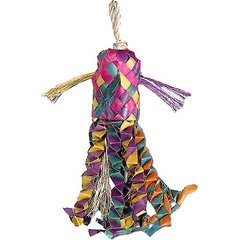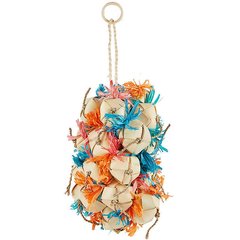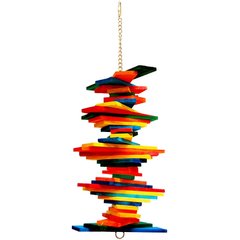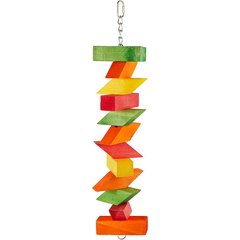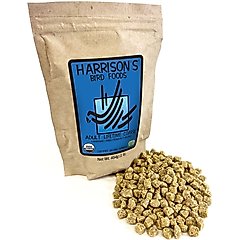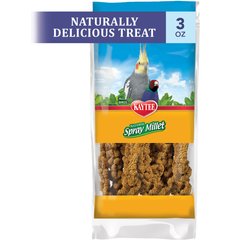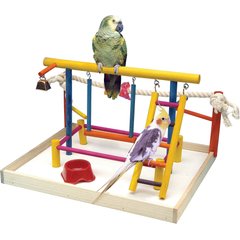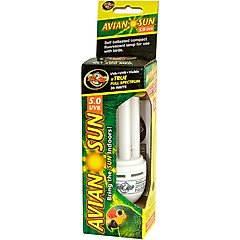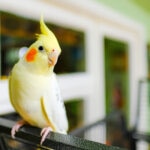Sun Conure Care Sheet
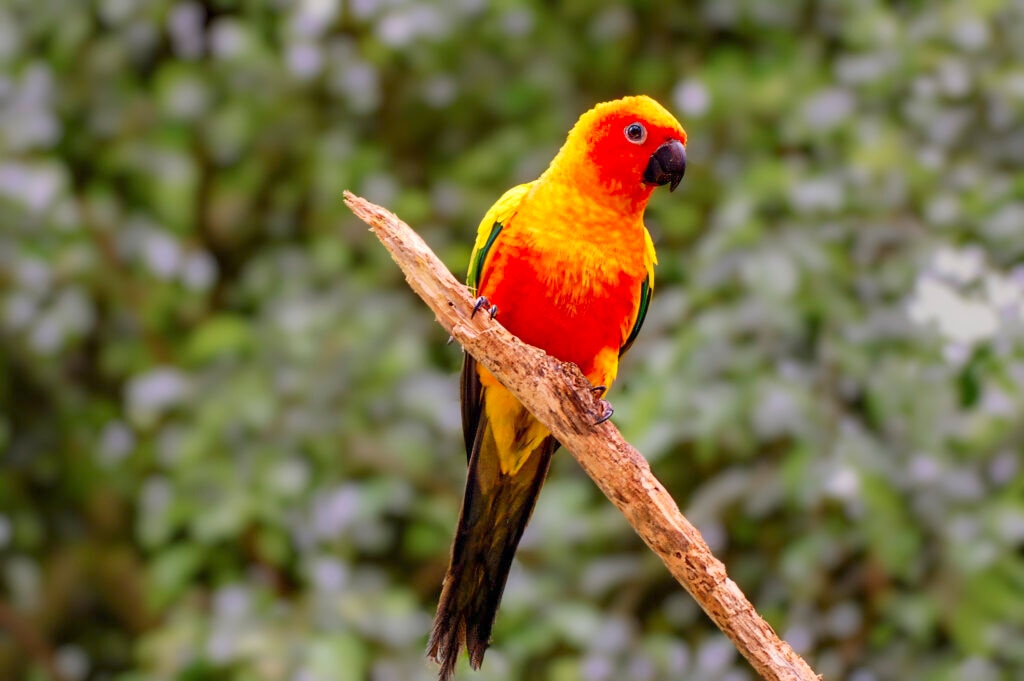
Photo by tracielouise/iStock/Getty Images Plus
Sun conures, also known as sun parakeets, are bright, colorful, rowdy parrots who are brilliant creatures. If you’re thinking of bringing home a sun conure, here’s how to give them a welcoming environment.
Overview
- Sun conures are expressive and social, but they don’t often mimic human speech.
- These birds tend to be louder than other parrots, so be comfortable with the noise.
- Sun conures can live up to 20 years or more with proper care.
Fun Facts
- Baby sun conures are all born green.
- Conures need constant mental stimulation because they can master challenge-type toys faster than other parrots.
Sun Conure Bird Habitat
Set up your sun conure habitat with an appropriately sized enclosure. For one bird, a cage should be at least 30 inches wide, 24 inches deep, and 36 inches high.
Recommended Products
Conures should be able to stretch and flap their wings comfortably. If you plan to keep more than one sun conure in the same enclosure, size your cage up appropriately (at least expand to 40” or 48” width with a 30” depth). No more than two sun conures should be kept in the same enclosure and raised together, and don’t raise other animal species in the same habitat as your sun conure.
The space between cage bars should be no wider than ¾ of an inch—a larger space in between leaves your bird at risk of escaping.
Keep household temperatures between 65–80 F with the cage in a draft-free, well-lit area.
Make sure the bottom of the cage has a removable metal grate. Line the base with habitat paper like the Prevue Pet Products T3 Antimicrobial Protected Paper Bird & Small Animal Cage Liner or a paper-based bedding.
Recommended Product
Spot–clean the cage daily and remove any dropped food and soiled materials. Wash food and water bowls regularly.
Recommended Product
Replace habitat liners daily, or more frequently if you have two birds in the same enclosure.
When cleaning, put your sun conure in a secure environment like a travel cage or a similar habitat. You could also place your bird on a play stand while cleaning the cage.
Recommended Product
Remove everything that’s inside the cage, and discard the old paper liner along with any old bedding and toys.
Use a bird habitat cleaner like Wee Away or a 3% bleach solution to wash the cage and the items inside it. Thoroughly rinse with water and allow everything to dry completely before adding back the toys and accessories and putting down a fresh liner or bedding.
Recommended Product
Add perches for your sun conure, like concrete, wood, or natural branches. Avoid sandpaper and sanded perch covers, as they can harm your bird’s feet.
Recommended Products
Your sun conure should be able to comfortably wrap their feet around each perch, so choose those that are ½-inch or more in diameter. If perches are too wide, birds won’t be able to grip them and could fall. Don’t place perches above food or water bowls, as droppings could fall in.
Sun Conure Toys
Sun conures are exceptionally intelligent birds. It’s important to give them regular attention, including human interaction and toys. Without adequate mental stimulation, sun conures could start feather-plucking or other self-harming habits.
Sun conures tend to master challenging toys faster than other birds. Give your parrot a variety of mentally stimulating toys that are fun to solve.
Recommended Products
Also, look for wooden toys, as they can encourage chewing and beak conditioning. Wooden toys need to be replaced more frequently than other toys, so have a few of them in case one has run its course and needs to be discarded.
Recommended Products
Sun Conure Food
Keep dry food, wet food, and water in separate bowls. If you have two sun conures, they should each have their own bowls and feeding stations. You may also provide a separate water dish that is large enough for your bird to bathe in, and clean it daily.
High-quality pelleted food makes up 60%–70% of your bird’s diet. Use the feeding instructions from the manufacturer to determine how much to feed your bird at mealtime.
Recommended Products
Fruits and vegetables should make up about 30% of your sun conure’s diet. While most are fine for them to consume, avoid fruits with pits and seeds. Also, avoid onions and garlic.
Treats should make up no more than 10% of your bird’s diet. Feed them fortified seeds and millet occasionally, like Kaytee Natural Spray Millet Bird Treats. There’s no need to remove the hulls of seeds beforehand; conures do this themselves.
Recommended Product
Handling
Sun conures need a lot of human attention.
They like being petted and handled, with some being more demanding of your attention.
Take them out of their cage daily for exercise, play, and human interaction. You can even let them spend time on a playpen.
Recommended Product
Be prepared to show your bird extra love and attention, compared to some other types of pets that may be more hands-off.
Health
Your bird needs daily UV exposure. Bring them outside every day in an escape-proof cage as temperatures allow. Sun conures should never be left in direct sunlight or unattended.
You can also place a full-spectrum UV light, like the Zoo Med Avian Sun Compact Fluorescent Bird Lamp, about 12–18 inches from where your bird perches, supplementing natural UV exposure for 10–12 hours daily.
Recommended Product
Pay attention to your bird’s appearance and behavior. They should have:
- Bright, clean, and clear eyes
- Clean and intact beak
- Clean feet and a strong grip
- Full range of wing motion
- Consistent droppings
Sun conures should be seen by a veterinarian annually for a regular checkup. An additional visit may be needed if you notice anything out of the ordinary, like:
- Eye or nasal discharge
- Beak fractures or an overgrown beak
- Feather plucking, bleeding, or uneven feather growth
- Runny or abnormally colored discharge
- Limping, abnormally holding a wing, or refusing to use a wing
- Itching or constantly fluffed feathers
- Weight loss or loss of appetite
- Rapid breathing or not vocalizing
- Sitting at the bottom of the cage with fluffed feathers
Birds are a prey species, so they hide signs of illness or injury as a defense mechanism. Thoroughly study your bird’s typical behavior so you can spot when something is off. If your sun conure shows any unusual signs, contact your vet immediately.
Supply Checklist
- Appropriately sized habitat that’s at least 30” wide x 30” deep x 36” high
- Habitat paper, other paper, or litter
- High-quality pelleted conure food and birdseed
- Fruits and veggies
- Cuttlebone and millet holder
- Treats, including millet spray
- Food and water bowls
- Perches of assorted sizes
- Play gym and appropriate conure toys
- Misting spray bottle
- Bird nail trimmer
FAQs About Sun Conures
Do sun conures talk?
Yes, sun conures talk, but aren’t very big talkers compared to other parrots. However, when they do talk they are very expressive.
How long do sun conures live?
With proper care, sun conures can live 20 years or more.
How much does a sun conure cost annually?
The average cost to care for a small pet bird is about $300 annually. Pet food, accessories, medical care, and vet exams vary widely in price, based on brand and location.
